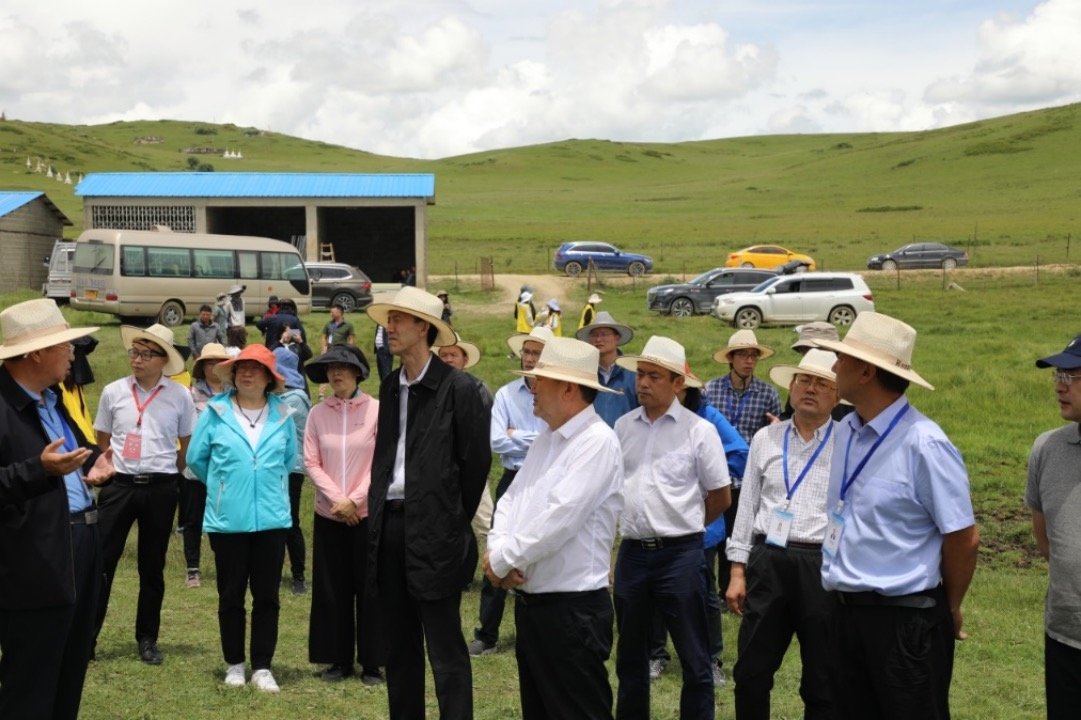Sichuan adds a national science and technology innovation base!State Wild Scientific Observation Research Station, Sichuan Johgai Gaoshan Wetland Ecosystem State
Author:Chuanguan News Time:2022.07.17
Chuanguan News reporter Xu Lisha
The reporter learned from the Provincial Department of Science and Technology that on July 14, the development seminar at the National Wild Scientific Observation Research Station (referred to as "Johga Station") of the national wild scientific observation research station (referred to as "Johga Station") was held in Hongyuan County, Aba Prefecture. At the meeting, Jorge Station was officially unveiled, and Sichuan added an important national scientific and technological innovation base.
At the meeting, the relevant person in charge of the Provincial Department of Science and Technology read out the relevant notice of the Ministry of Science and Technology on the establishment of the national wild scientific observation research station of the national wild scientific observation research station of the Sichuan Johgai Gahan Wetland Ecosystem. The representatives of all parties were unveiled together.
The area where Ruergai Station is located is the eastern edge of the Qinghai -Tibet Plateau. The area belongs to the semi -humid climate zone of the sub -cold belt. It is the largest high -cold swamp wetland in China. The area is 3485 meters above sea level, with an average annual temperature of 1.4 degrees Celsius, and an annual precipitation of 749 mm.

On July 14, the national wild scientific observation research station of the national wild scientific observation research station in the high -cold wetland ecosystem of Sichuan was officially unveiled at Aba Prefecture.
The high -cold ecosystem is most sensitive to the response to global climate and local climate change. Under the dual pressure of human activities such as climate change and overloaded grazing, ditch digging and drainage, grassland degradation and land desertification have become the construction of the area to build ecological security barriers and ecological civilization construction in the area. Severely restrict the factors, sandy desertification has intensified land desertification, the scale of the grassland is sharply decreasing, the groundwater level decreases, the wetland atrophy, and the reduction of biodiversity, etc., restricts the sustainable development of grass animal husbandry in northwestern Sichuan. Earlier, there were no relevant national field observation stations in the area.
In 2011, the Southwest University for Nationalities established the "Southwest University of Ethnic University's Qinghai -Tibet Plateau Ecological Development and Research Demonstration Base for High -tech Research on Animal Husbandry", becoming an important foundation for building Ruo Gee Station. In 2020, Jorgi Station was selected as a selection list for the National Field Scientific Observation Research Station. In 2021, Jorgei Station was officially approved.

During the event, the participants also went to the Takhan Wetland comprehensive observation field at the Gahan Wetland of Ruiergi Station at the Grand Qiao Grand Swamp for investigation.
Jorgi Station is an important scientific research platform for scientific observation, research, demonstration, and service of the Qinghai -Tibet Plateau region to serve ecological civilization construction and rural revitalization in ethnic regions. Integration of grassology, ecology, animal husbandry, and biology disciplines have formed the three core research areas of the three core research fields of ecological, biological resources protection and utilization, and grass animal husbandry of high -cold meadow and wetland ecosystems. Wetland ecosystem structure, process and functional research, high -cold meadow ecosystem system of grazing interference response, high -quality resource protection and utilization of plateau plants, and the protection and utilization of yak Tibetan sheep germplasm resources.
It is understood that the Chinese Academy of Sciences rely on 12 countries to carry out carbon exchange three -dimensional monitoring science and education infrastructure construction. Among the 12 stations, there are 8 forest stations and 4 wetland stations. Among them, 3 of the wetland stations are Binhai Wetland Station, and only "Ruergai Station" is a high -cold inland wetland station. After the construction of carbon exchange for carbon exchange at Wetland Station, it can not only provide actual measurement data and scientific and technological support for Hongyuan County, Aba Prefecture, Sichuan Province, and the national carbon neutrality of the country, but also provide ground verification and theoretical basis for international carbon satellites.
- END -
"Master's degree, the instructor asked me to extend, saying that he was not my nanny ..."

I am Kudo Masaki, a blogger who knows the top of the masterpiece. Recently, I enco...
[Jinchang, Gansu] Jinchang City Rescue Station Carrying out Rescue Open Day

June 19 this year is the tenth national rescue Open Day. The Municipal Rescue Stat...